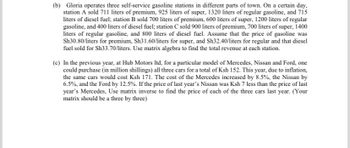(a) The following diagram shows the movement of Kenyan households among three income groups: affluent, middle class, and poor, over the 11-year period 1980–1991. AFFLUENT 27.1% Sh72,000 (in 1994) 7.5% MIDDLE CLASS 8.5% Sh24,000 (in 1994) 30.4% POOR (i) Use the transitions shown in the diagram to construct a transition matrix (assuming zero probabilities for the transitions between affluent and poor). (ii) Assuming that the trend shown was to continue, what percent of households' classified as affluent in 1980 -1991, were predicted to become poor in 1993? (iii) According to the model, what percentage of all Kenyan households will be in each income bracket in the long term?
Continuous Probability Distributions
Probability distributions are of two types, which are continuous probability distributions and discrete probability distributions. A continuous probability distribution contains an infinite number of values. For example, if time is infinite: you could count from 0 to a trillion seconds, billion seconds, so on indefinitely. A discrete probability distribution consists of only a countable set of possible values.
Normal Distribution
Suppose we had to design a bathroom weighing scale, how would we decide what should be the range of the weighing machine? Would we take the highest recorded human weight in history and use that as the upper limit for our weighing scale? This may not be a great idea as the sensitivity of the scale would get reduced if the range is too large. At the same time, if we keep the upper limit too low, it may not be usable for a large percentage of the population!

Trending now
This is a popular solution!
Step by step
Solved in 2 steps










